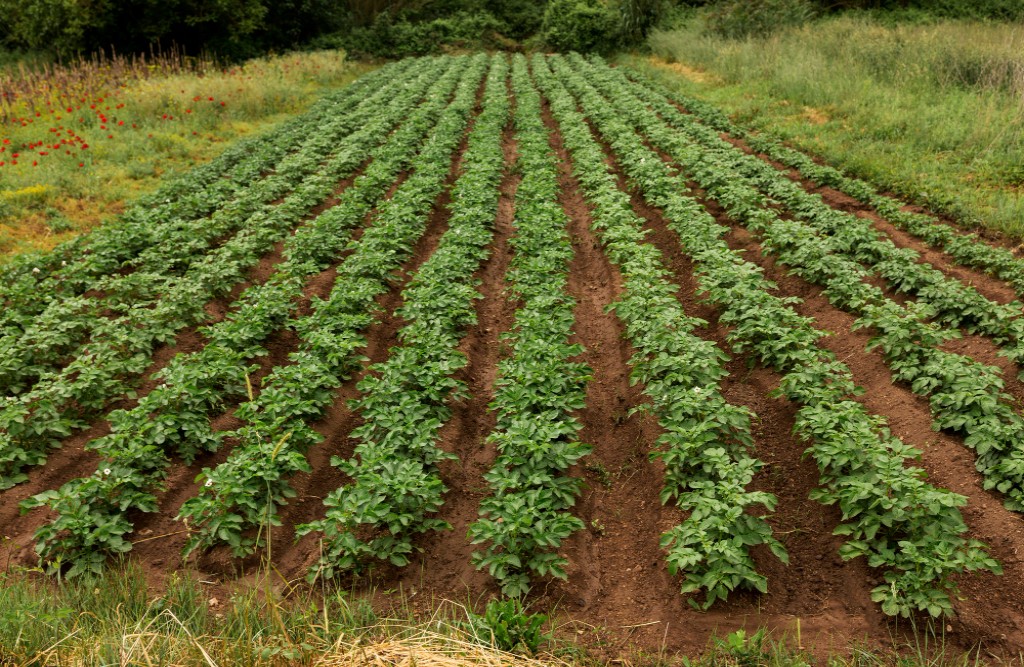
Potatoes are renowned for their origins in South America, traditionally considered their homeland. However, they were introduced to India from Europe during the 17th century. Following rice, wheat, and sugarcane fields, potatoes hold the fourth position in the agricultural sector. This crop yields higher production and income per unit area compared to other crops such as wheat, rice, and peanuts. Potato cultivation contributes to 30% of agricultural activity in India, with Uttar Pradesh (30%), Bihar (13%), and Madhya Pradesh and Gujarat states equally sharing 6% each.
Potatoes are cultivated as a winter crop, thriving in cooler temperatures. Ideally, daytime temperatures should range between 25-30 degrees Celsius, while nighttime temperatures should be between 4-15 degrees Celsius. The optimal temperature for bulb formation is around 18-20 degrees Celsius. Excessive heat can impede bulb formation, while low temperatures restrict vegetative growth. It's advisable to plow the land 3-4 times using a harrow or cultivator. After each plowing, utilize a leveler to ensure proper moisture retention and soil aeration. Currently, employing a rotavator can expedite and improve land preparation. Proper land preparation before planting is crucial for maximizing production.
Read More... How to do Fig Cultivation, Farmers are Earning Profits Worth Lakhs
During the winter season, potatoes should be irrigated twice a week. In periods of dry spells, more frequent irrigation is recommended. In heavy soil, the initial irrigation should be carried out approximately 10-12 days after planting, just before germination. The second irrigation should occur 20-22 days after planting, followed by the third irrigation immediately after earthing up the soil during the early stages of tuber formation. The final irrigation should be ceased roughly 10 days before harvesting. Various irrigation methods such as drip irrigation, sprinkler irrigation, overhead rain guns, and furrow irrigation should be utilized for potato cultivation. Typically, 7-10 irrigation cycles are necessary to achieve a good yield in potato crops.
Potatoes thrive in various soil types, with loamy, sandy, or sandy loam soil typically yielding the best results. The ideal pH level for potatoes ranges between 6 and 8. Applying organic manure like cow dung compost can significantly enhance yield. Potato cultivation enjoys success throughout India, except in Tamil Nadu and Kerala, where farmers also achieve notable success. Planting potatoes is recommended from September 15th to November during the winter season. Additionally, in certain Indian regions, potato cultivation is conducted during the monsoon season.
Before planting potatoes, completely remove any grass or weeds. The first step in potato cultivation involves cutting potatoes into pieces. Next, prepare furrows in the soil, and plant the potato pieces one by one in these furrows. Then, cover the potatoes with soil. After 3 months, the potatoes can be harvested. Maintain a distance of 60 centimeters between rows during potato planting, and the spacing between potato plants should be determined according to the size of the potatoes.
The use of green manure, such as farmyard manure, enhances organic matter, which aids in bulb production. Utilize nitrogen, phosphorus, and potassium. A supply of 180:80:100 kilograms of nitrogen, phosphorus, and potassium can be beneficial. Early-maturing potato varieties tend to have relatively lower yields compared to long-duration varieties. The yield of superior varieties ranges from 600-800 quintals per hectare, while average varieties yield around 350-400 quintals per hectare.
Varieties of Potatoes:
Earnings from Potato Cultivation: India, approximately 110 quintals of potatoes can be obtained per acre of land, potentially generating earnings of up to 1 to 2 lakh rupees for farmers.
Potato Diseases and Prevention: